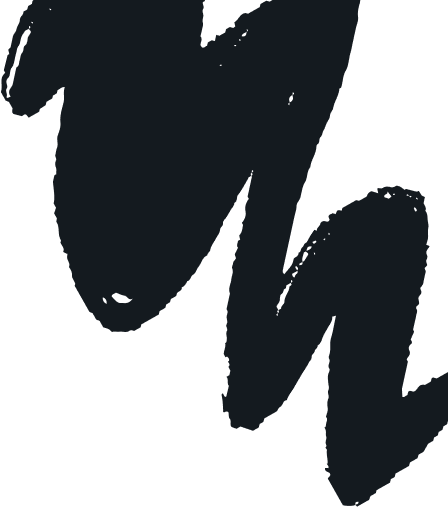.png)
Virtual school 1.0 vs 2.0 (spot the difference)
Virtual school 1.0 vs 2.0 (spot the difference)
Virtual school 1.0 vs 2.0 (spot the difference)
DEEP DIVE: The Changing Faces of Virtual School
March 2020: Teachers broadcast from their kitchens. Kids stared into the void of Gallery View. Parents became unpaid IT support, printing worksheets and resetting passwords. Virtual school wasn't working.
Fast forward to 2025: A seventh grader in rural Idaho takes AP Calculus online and scores a 5. A dancer in California attends virtual prep school while touring with her company. A kid in Montana learns marine biology from an actual marine biologist in Florida.
Both can be called "virtual school." But they're worlds apart.
Michael Vilardo watched the pandemic from a unique vantage point. He'd just spent $70,000 on a UCLA MBA via Zoom—"the worst learning experience of my life." By day, brutal online classes. By night? Netflix. The Last Dance. Tiger King. He'd binge these shows, loving every episode.
"That was the institutional equivalent of pointing a camera at a stage play and calling it a movie," Vilardo says. "The problem wasn't the technology. It was the failure of imagination."
So Vilardo built Subject—premium courses delivered through five-minute videos by teachers who speak to the camera like trusted influencers. Student athletes and dancers can complete rigorous academics in focused blocks, freeing time for what defines them.
Meanwhile, Amir Nathoo's Outschool offers 140,000+ classes. "Every teacher can spin up their own little one-room schoolhouse," he explains. Kids pop from one to another, assembling education like we assemble the rest of our lives.
We all know that screens come with issues. But before you throw the virtual baby out with the bathwater, consider how you might leverage online resources in a targeted, strategic way—ultimately with the goal of having more time for real-world exploration.
Read the full story of how virtual school is evolving →
PODCAST HIGHLIGHT: Why Middle School Matters
Did you know that—after the explosion of brain development in early childhood—there's a second major window of neuroplasticity during ages 11-14—when the brain reorganizes almost as dramatically as in toddlerhood?
Jean Eddy of American Student Assistance claims that "[m]iddle school kids have brains that are as thirsty, as willing to take in information as toddlers."
(And she has data to prove it).
But by 15, peer pressure intensifies. The willingness to try new things dampens. Most schools introduce career exploration in high school. By then, it's too late.
"We work a very long time in this life," Eddy says. "You better figure out what it is you love to do."
Learn how to help your pre-teen follow their curiosities and passions (without the pressure) →
THOUGHTS OF THE WEEK
Create Before You Consume Isaac's kid wanted to watch YouTube all day. So he made a rule: create an episode before you watch one. "It doesn't have to be good. You don't even have to like it. Just create something, then go study what others built."
Relationships Trump Delivery Method Ray Ravaglia's 30-year discovery: purely self-paced online courses have 30% dropout rates, even for gifted kids. Add live sessions where students see each other? Attrition drops to 2-3%. "When you've learned something new, you need that interaction."
The Definition Problem Researcher Brian Ray of the National Home Education Research Institute says we need a uniform definition of homeschooling: parent-controlled, home-based, and privately funded. But what about roadschoolers in RVs? Families sharing studio space? As definitions get stricter, reality gets messier.
TRENDS OF THE WEEK
Learning Labs Sprouting Everywhere The Wichita Learning Lab—a parent-built hub in a renovated warehouse—operates like a mashup of co-op, makerspace, and community center. Weekday workshops in one room, self-directed learners prototyping in another, parents co-working the perimeter. Expect 1,000 similar spaces in coming years.
Three Models of Virtual School Emerge The Media Model (Subject): 5-minute TikTok-style lessons. The Community Model (Stanford Online High): Live seminars that create accountability. The Marketplace Model (Outschool): 140,000 classes, pick what you need.
The Middle School Career Crisis 74% of students using ASA's Futurescape discovered personal strengths they didn't know. 78% learned about jobs they'd never heard of. The problem? Most schools wait until high school when the neuroplasticity window has closed.
Education's Netflix Moment Students complete 66% more assignments with video-based learning vs. traditional lectures. Michael Vilardo, founder of Subject, says: "Gen Z doesn't learn in 50-minute chunks. They learn in the rhythm of YouTube and TikTok."
TOOLS OF THE WEEK
Planning & Discovery:
- Learning Landscape Worksheet - Map interests, non-negotiables, and resources
- Futurescape - Free career exploration for middle schoolers
Virtual School Options That Actually Work:
- Subject - 5-minute video lessons for busy student athletes
- Outschool - 140,000+ classes in everything imaginable
- Stanford Online High - Live seminars with real community
- OpenEd Academy - Customizable virtual private school
Reddit's Top YouTube Channels for Education:
- Miacademy - Multi-subject lessons for homeschoolers
- Mark Rober - Engineering and problem-solving
- CrashCourse - Everything from astronomy to entrepreneurship
- Art for Kids Hub - Step-by-step family art
- Two Cents - Finance for teens
Subscribe to The OpenEd Daily
Join 20,000+ families receiving curated content to support personalized learning, every school day.
.webp)
.avif)


.png)
.png)
.png)